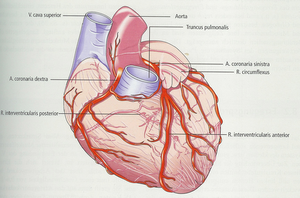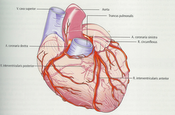Information
- Publication Type: Master Thesis
- Workgroup(s)/Project(s):
- Date: March 2008
- First Supervisor:
- Sebastian Zambal
- Katja Bühler
- Eduard Gröller
Abstract
Cardiovascular diseases are the major cause of death in the developed world. About half of these are due to ischemia heart diseases. The high death rate caused by coronary artery diseases increases the need for preliminary detection. Perfusion magnetic resonance imaging has turned out to be very promising for this purpose. A contrast agent is injected intravenously to visualize the perfusion. Due to the extremely time-consuming manual analysis of these relatively large datasets, efforts for automatic approaches have been introduced. Most of these proposed methods focus on parts of the analysis process. The present thesis identifies four steps for an automatic analysis approach: localization of the heart, suppression of motion artifacts, segmentation of the myocardium, and perfusion analysis. This thesis presents a method covering all these subtasks in an automatic manner with no need for any user interaction. First the acquired MR images are analyzed to roughly detect the heart. A registration step compensates motion artifacts based on the breathing of the patient. The segmentation step provides the contour of the myocardium at every time step. Based on these segmentations the perfusion is quantified. This thesis gives a detailed description of the implementation. Furthermore the algorithm was tested on 11 datasets. The obtained results are presented and discussed. Inspection of the results indicates that this method is very promising for an efficient perfusion analysis.Additional Files and Images
Weblinks
No further information available.BibTeX
@mastersthesis{schoellhuber-2008-asc,
title = "Automatic Segmentation of Contrast Enhanced Cardiac MRI for
Myocardial Perfusion Analysis",
author = "Andreas Sch\"{o}llhuber",
year = "2008",
abstract = "Cardiovascular diseases are the major cause of death in the
developed world. About half of these are due to ischemia
heart diseases. The high death rate caused by coronary
artery diseases increases the need for preliminary
detection. Perfusion magnetic resonance imaging has turned
out to be very promising for this purpose. A contrast agent
is injected intravenously to visualize the perfusion. Due to
the extremely time-consuming manual analysis of these
relatively large datasets, efforts for automatic approaches
have been introduced. Most of these proposed methods focus
on parts of the analysis process. The present thesis
identifies four steps for an automatic analysis approach:
localization of the heart, suppression of motion artifacts,
segmentation of the myocardium, and perfusion analysis. This
thesis presents a method covering all these subtasks in an
automatic manner with no need for any user interaction.
First the acquired MR images are analyzed to roughly detect
the heart. A registration step compensates motion artifacts
based on the breathing of the patient. The segmentation step
provides the contour of the myocardium at every time step.
Based on these segmentations the perfusion is quantified.
This thesis gives a detailed description of the
implementation. Furthermore the algorithm was tested on 11
datasets. The obtained results are presented and discussed.
Inspection of the results indicates that this method is very
promising for an efficient perfusion analysis.",
month = mar,
address = "Favoritenstrasse 9-11/E193-02, A-1040 Vienna, Austria",
school = "Institute of Computer Graphics and Algorithms, Vienna
University of Technology ",
URL = "https://www.cg.tuwien.ac.at/research/publications/2008/schoellhuber-2008-asc/",
}

 paper
paper

